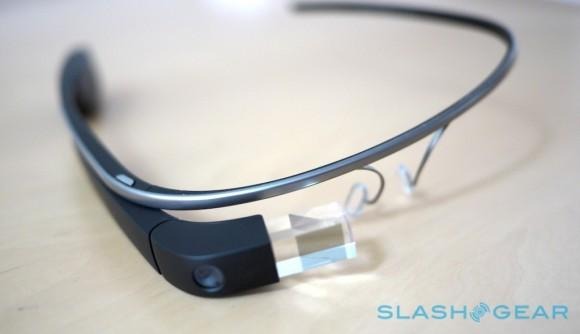Wearables Addictive And Unstoppable Says Google X's Mary Lou Jepsen
Wearable computing is an unstoppable, addictive force that could well step in to address neurodegenerative illnesses where medicine cannot, Google X's Mary Lou Jepsen says, though the display division chief refuses to be drawn on what her team is working on inside the clandestine lab. "It's coming. I don't think it's stoppable" Jepsen said of wearables like Google's Glass which she wore round her neck while speaking at MIT's EmTech conference on Thursday. However while it may be inescapable, Jepsen still can't tell us about her particular role in the future; "Sergey insists" on continued secrecy around her project, she explained, referring to Google X lab overseer and Google co-founder Sergey Brin.
Jepsen's background was already in game-changing hardware. As well as co-founding the One Laptop Per Child (OLPC) project, which aims to bring affordable computing equipment to both developing nations and classrooms closer to home – most recently with the XO Tablet – the display expert founded Pixel Qi, arguably the most successful transflective LCD manufacturer. Pixel Qi products not only work as regular LCDs in normal lighting, but can be used in high-contrast mode outdoors in bright sunlight or when minor power consumption is required.
She joined Google X earlier this year, as "Head of the Display Division", working on Google's so-called "moonshot" projects like self-driving autonomous cars which are not so directly connected to the bottom line as products like search, Gmail, and AdWords.
Jepsen is clearly convinced by wearables such as Glass. Describing them as "a way of amplifying you", much in the same way that she for a long time felt that her laptop was an extension of her mind, the benefit from wearable tech is that it "lets you do more, fast and easily" she suggests. In fact, "you become addicted to the speed of it" Jepsen warned, not only for more everyday tasks like taking photos, but one day for helping people with memory loss and similar conditions.
In ten years for instance, Jepsen predicted, wearables like Glass will be able to quickly identify those people around you, which the exec pointed out would be a real benefit to people with Alzheimer's among others. That's assuming Google can get past the privacy concerns; at the moment, the company has said it will not allow face-recognition on Glass until those worries are settled.

Although wearables may end up being ubiquitous, that doesn't mean that we'll all be wearing Glass – or, indeed, hardware that looks like anybody else's – Jepsen claims. As well as her opinion that a range of choice in the design of any body-worn gadget is essential if they're to be commercially successful, given users will approach them as they do their personal taste in clothing and accessories, she suggested that physical and UI design are only part of a challenge in the segment that's still yet to be addressed.
"There's only so much you can do by styling the housing and icons" she commented. "I think there's a lot of room for diversity and innovation of approach here."
The current Glass Explorer Edition is offered in five colors, ranging from the more discrete black through to bright tangerine orange and "sky" blue. That, Google's Isabelle Olssen, lead industrial designer on the wearable, said at the company's own I/O conference, was because a single color was deemed too restrictive given Glass' requirement to "satisfy different personalities."
Future iterations, such as perhaps the consumer model which Google has suggested is on track for a 2014 release, could even be modular so as to be more flexible or scalable in how they integrate with whatever else the user is wearing.
That need for prior consideration of how a product will scale once launched is something Jepsen touched upon during her talk. In fact, she argued, it's vital that it's understood from very early on in the product-development cycle.
As for what Jepsen's team in particular is working on, that might be rolled out into the public eye in 2014. The division is "maybe sleeping three hours a night to bring the technology forward" but, as with other Google X projects, Brin had sworn her and the others to secrecy in the meantime.
IMAGE CDernbach
